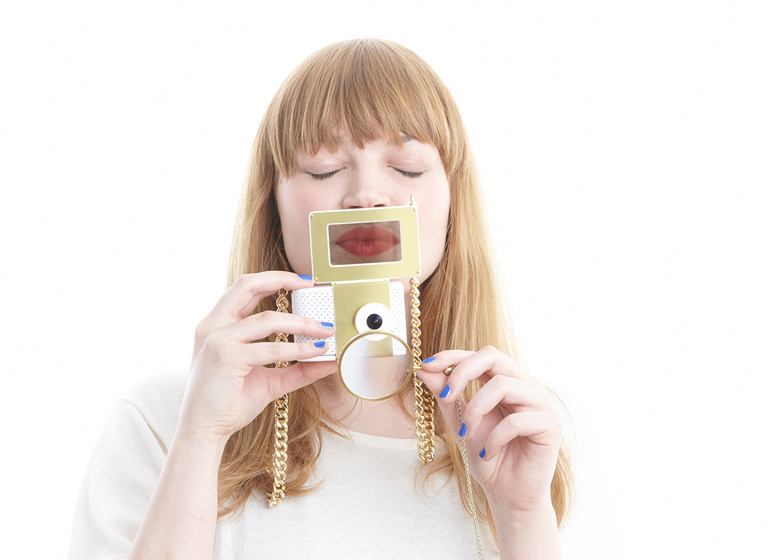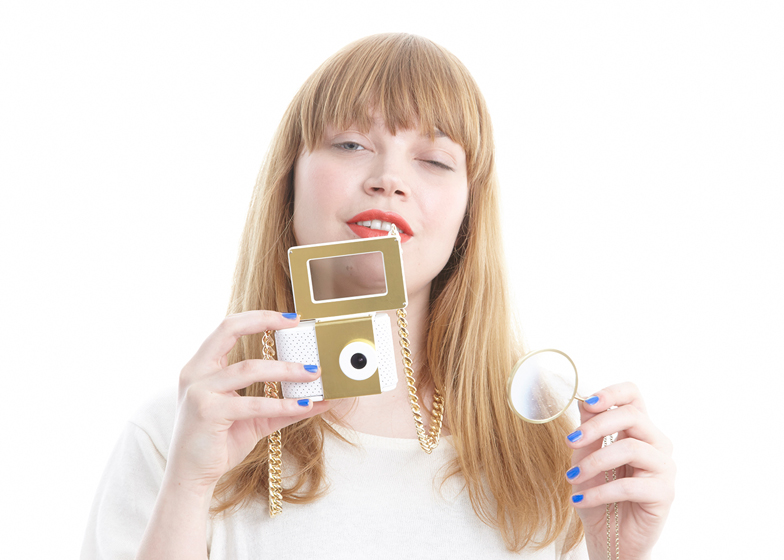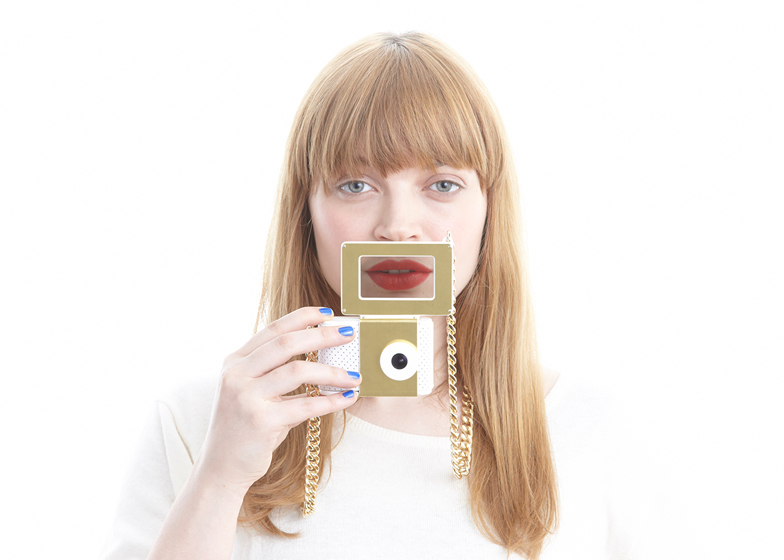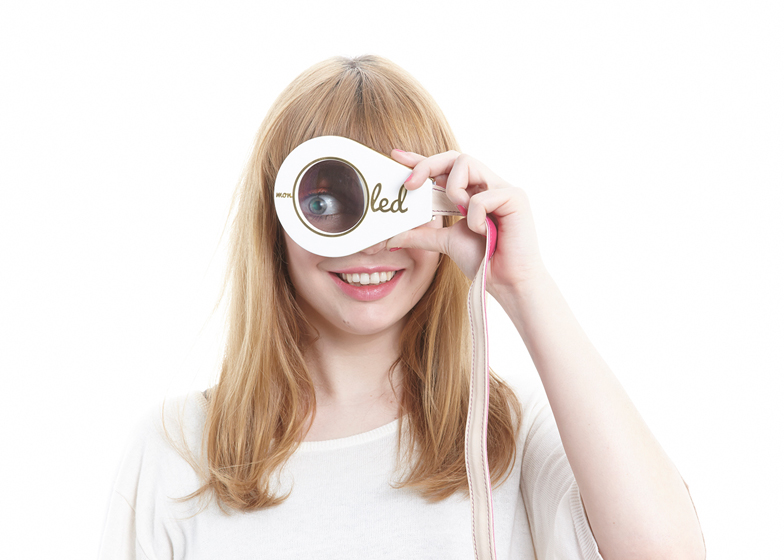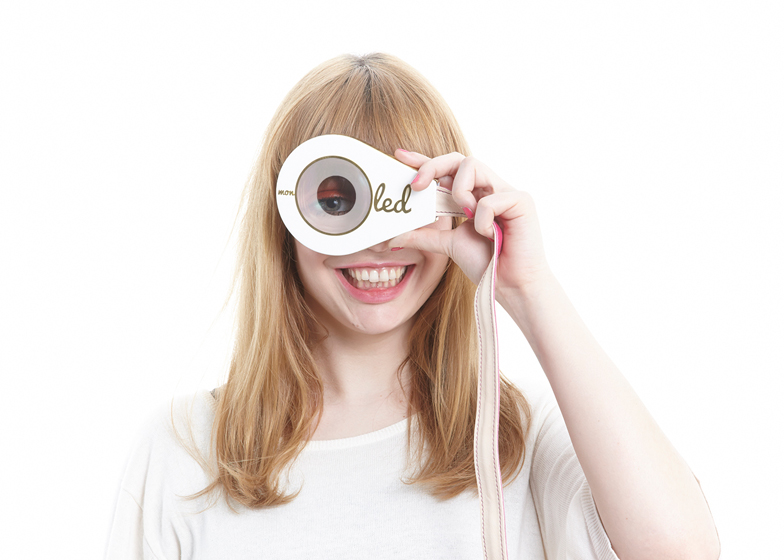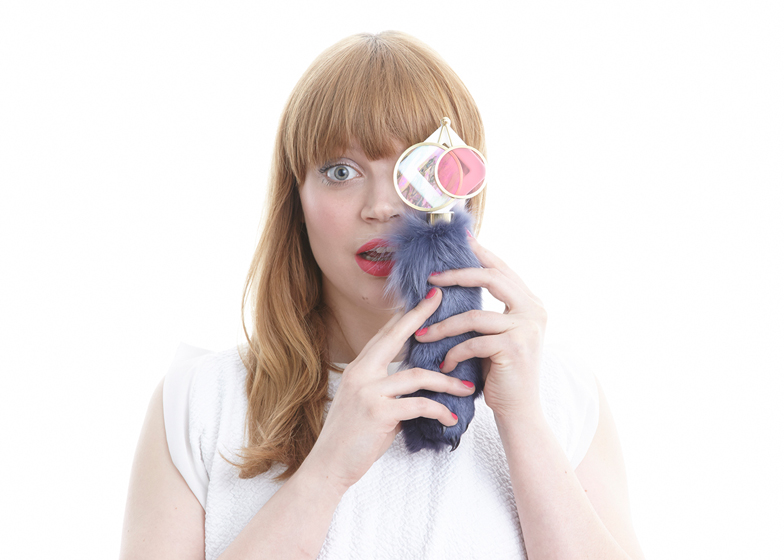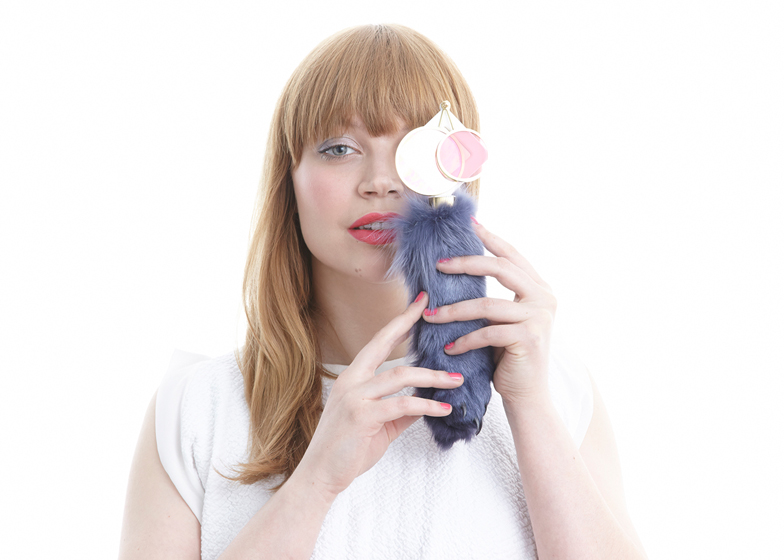Milan 2014: Vienna designers taliaYstudio have developed a series of prototype high-tech "holdable" devices including a monocle that makes your eye look bigger, a digital lollipop that cheers you up and a camera triggered by a kiss (+ movies).
The three devices, which will be shown at the Confessions of Design exhibition in Milan this week, all feature transparent OLED lighting technology and are designed to be worn on the body as accessories but held in the hand while in use.
"They're also a bit of a satirical commentary on the current wearable tech frenzy going on at the moment," said Talia Radford of taliaYstudio. "We love technology but found the current wave of wearable tech frenzy mostly insensitive, unspecific and often looking like generic shit."
Working with OLED manufacturer OSRAM, the studio explored ways of integrating the wafer-thin lighting technology into portable devices. Transparent OLEDs are see-through when switched off.
"Basically we had a bit of fun, with a serious undertone that revolves around showcasing the application possibilities of transparent OLEDs," said Radford. "We wanted to make something fun and meaningful and playful and desirable – something that would make the technology accessible and its possibilities understood through design."
She added: "We had to find applications that could only be carried out by and with the OLED lighting technology."
All three devices eschew traditional "on/off" button technology and instead use movements or gestures such as stroking, twisting or kissing to activate them.
The first "holdable" is called monOled. This lights up to illuminate the object you are looking at while magnifying your eye at the same time. "MonOled is a monocle in a pouch that you can pin to your shirt like a shirt-pocket," Radford explains. "The hand gesture of taking it out to use makes it light up around the edges, illuminating whatever it is you are trying to get a closer look at and making your eye look big and beautiful at the same time."
The user looks through the circular, non-illuminating area in the middle while the rim of the object lights up. The brightness can be adjusted by twisting the device.
The second device is called SAD Lolly and is described as "a health gadget that you wear as a brooch to help prevent you suffering from the winter blues (Seasonal Affected Disorder or SAD) by using light as an effective anti-depression drug."
Worn as a brooch, the device automatically switches on the OLED panels when lighting levels are low, allowing the user to hold the device to their eyes to get a "shot" of light. "Light taken in through the eye works quickest and acts like a drug for the body," says Radford, "particularly if you use different coloured filters to change the frequency and therefore the effect of the light."
This device combines OLED technology with real fox fur, which has been added as "a fetishy reference to the comfort blankets people carry." Stroking the fox fur causes the device to emit extra light.
Radford says: "During the Salone we will be blogging our quantified light-logged experience in the form of written rhetoric, as an experiment to see if this wearable light can really affect our happiness."
The third device, called Kiss Cam, is a portable, buttonless play camera. A transparent OLED panel acts as both viewfinder, touch-screen shutter and flash. To take a photo, the user kisses the panel, triggering the OLED flash.
"You look through the viewfinder, see something you love and give the OLED viewfinder a kiss to capture the image," says Radford. "It leans heavily on the language of social media such as likes on Facebook and Instagram,and changes it into a gesture."
The studio has designed a range of glass filters for the camera that are worn as jewellery and manually fitted over the lens for an analogue version of an Instagram filter effect.
"What's really amazing is that the OLED doesnt need an extra layer to become a touchscreen," says Radford. "It can be manipulated to become one."
The studio will be touring Milan with the devices, recording their experiences and taking photos, which will be uploaded to the @KissKissCamCam Instagram page.
"The photos are saved digitally onto a micro SD card and can only be viewed and selected once they are downloaded onto a computer, blurring the lines again between our digital/analog interactions," says Radford.
Holdables were designed by Talia Radford and Kickie Chudikova with electronics and programming by Peter Herbert Linhart.
They will be exhibited at Confessions of Design at Rotonda Della Besana, Via Enrico Besana 12, 20122, Milan, from 8-13 April.
Images are by Stephan Doleschal/taliaYstudio. Together with Jonas Bohatsch the studio previously developed Thermobooth, a photo booth featuring an OLED flash that triggers when the subjects touch.

